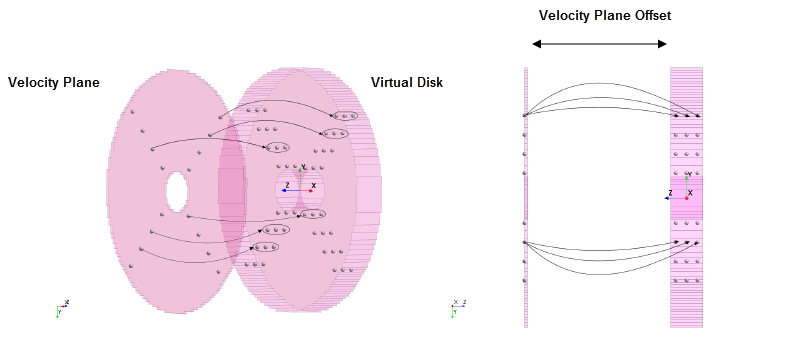Inflow Velocity Plane
The inflow velocity plane is located upstream of the virtual disk and is oriented with respect to the direction of the virtual disk normal, that is, with respect to the Z direction of the disk local coordinate system. This plane is discretized using the same resolution as the radial and azimuthal virtual disk resolution.
The inner and outer radius of the velocity plane match to the inner and outer virtual disk radii, respectively. Based on the user-specified radial and azimuthal disk resolution, the velocity plane is resolved by a two-dimensional polar mesh that is divided into buckets similar to the virtual disk. Each bucket is associated with a number of cells on the volume mesh. The velocity and density of the flow field is volume-averaged over the bucket. The averaged velocity vector is then transformed into the local coordinate system of the virtual disk. The resulting volume-averaged velocity and density of a velocity plane bucket are interpolated to the corresponding bucket on the virtual disk mesh.

A bucket on the inflow plane with a particular coordinate is associated with the same coordinate on the virtual disk mesh. Thus, all buckets with the same coordinates, but varying z coordinates have the same density and velocity values. These values are available as field functions User Defined Inflow Plane Density of [Virtual Disk] and User Defined Inflow Plane Velocity of [Virtual Disk]. You cannot visualize these field functions on the underlying volume mesh. You use these field functions to access the flow field information to compute the volumetric source term using one of the methods of the User Source Term Profile.